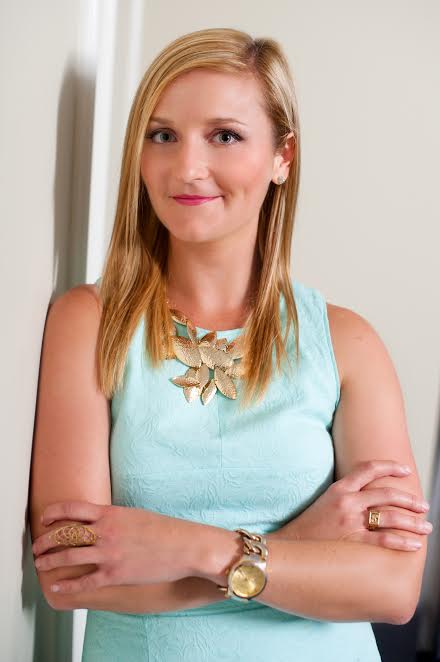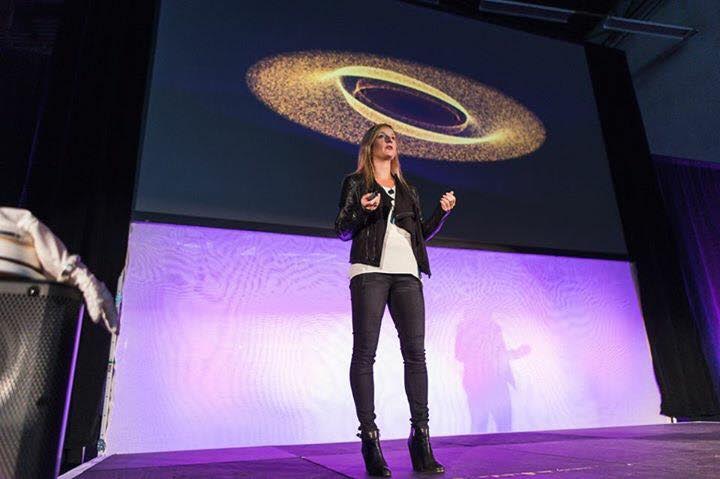Jess Gustetic is an aerospace engineer who leads public sector innovation at NASA.
Ricky: Tell us about yourself.
Jenn: For three years, I was an executive for the Challenges and Prizes Program at NASA. It was a lean program  with a smaller budget profile than the program’s budget I lead currently. It was focused on open innovation with prize competitions and crowdsourcing. One of the competitions I helped to design that I am particularly proud of was the Cube Quest challenge, which was the first and biggest in-space prize competition that NASA has held to date.
with a smaller budget profile than the program’s budget I lead currently. It was focused on open innovation with prize competitions and crowdsourcing. One of the competitions I helped to design that I am particularly proud of was the Cube Quest challenge, which was the first and biggest in-space prize competition that NASA has held to date.
After that, I was leading open innovation for the government in the Office of Science and Technology Policy. The projects went well beyond NASA prizes. They covered topics on energy, health, urban development, and more. This program recognized entrepreneurs that came up with possible solutions to all kinds of problems we are currently facing, such as diversity.
For the past five months, I have been an executive for the Small Business Innovation Research (SBIR/STTR) Program at NASA. It has been exciting thus far because I have been able to engage with a lot of small businesses and entrepreneurs. The program is fast-paced and it has made several investments with its roughly $200 million annual budget.
R: What is open innovation?
J: The premise of open innovation is that good ideas and skills can come from anywhere. You don’t need to be working at a large institution to have a large impact. The government works directly with individuals rather than working with agencies. Open innovation involves projects (prizes) that let individuals participate in challenges for paid compensation.
R: Why aerospace engineering?
J: I wanted to be an astronaut when I was a kid because who doesn’t want to be an astronaut? However, until the 8th grade I wasn’t a very good student and at that point algebra finally made sense, and I got even better at math. I was in the top 10% of students in high school and I graduated second in my class in my college. Since I really liked math and science in high school, I knew I wanted to be an engineer, but I wanted to study something really hard, and I was intrigued by space and the physics aspects of aerospace engineering.
R: What inspired you to go into technology policy?
J: My internships in undergrad really pushed me towards this field of study. I worked at Raytheon one summer where I was transitioning missile systems into production. The next internship involved policy work in Capitol Hill.
I realized that decisions relating to science and technology were not being made by scientists and technologists, but people with these science and technical backgrounds should be involved with these policy decisions. I was also intrigued in working in technology policy as opposed to focusing on engineering specific solutions. I felt like I can make the most difference in technology policy with my engineering background.
 R: Where do you see the aerospace industry headed in the next 10 years?
R: Where do you see the aerospace industry headed in the next 10 years?
J: I see a big push for commercial partnerships. In the past, NASA has provided crew for the International Space Station; however, there are an emerging set of commercial actors such that NASA would not have to be a provider of crew. Instead, we can just have commercial partnerships. For NASA, they are trying to identify different areas where partnerships would be helpful, such as SpaceX providing cargo services that would free up NASA to focus on other areas such as their Journey for Mars project.
R: Entrepreneur Elon Musk has outlined his vision for establishing a human colony on Mars for people that can afford a $200,000 ticket price. What are your thoughts on the commercialization of space?
J: Having humanity extend our presence in space requires more than NASA’s presence in space. We need the government supporting this venture. However, the space ecosystem is supportive of new players in the commercial sector, so the more the better.
R: What do you think is the biggest challenge women face in tech?
J: The reality of recruiting talent and maintaining talent is not only a problem for NASA, but it is also a problem for the space ecosystem. As a priority, we need to continue to encourage and support diversity. We have evolved since the Apollo days and diversity in the workforce brings new perspectives, creativity, and energy. The aerospace industry needs to continue to embrace and prioritize diversity.
R: Do you have any advice for millennial girls looking to pursue a career in the aerospace industry?
J: There are many paths to take in the aerospace industry. Having technical competence can be important to building credibility within the industry. Furthermore, attention to detail and initiative are import traits to refine. Don’t look at any task as too small. Instead, you should look for how well you can innovate and execute any size task. Try to do excellently in everything.
R: What is a fun fact about yourself?
J: I will share two fun facts:
1) I love karaoke. It is fun and no one can seem too proud or serious at karaoke. It shows a different side of oneself. I also happen to participate in competitive karaoke.
2) My first job out of grad school was working for the TSA, not aerospace industry. I was in college when 9/11 occurred and I wanted to work in Homeland Security. It was not until 5 years later did I start my career in the aerospace industry.
Contributor: Ricky Rajani



Comments (0)